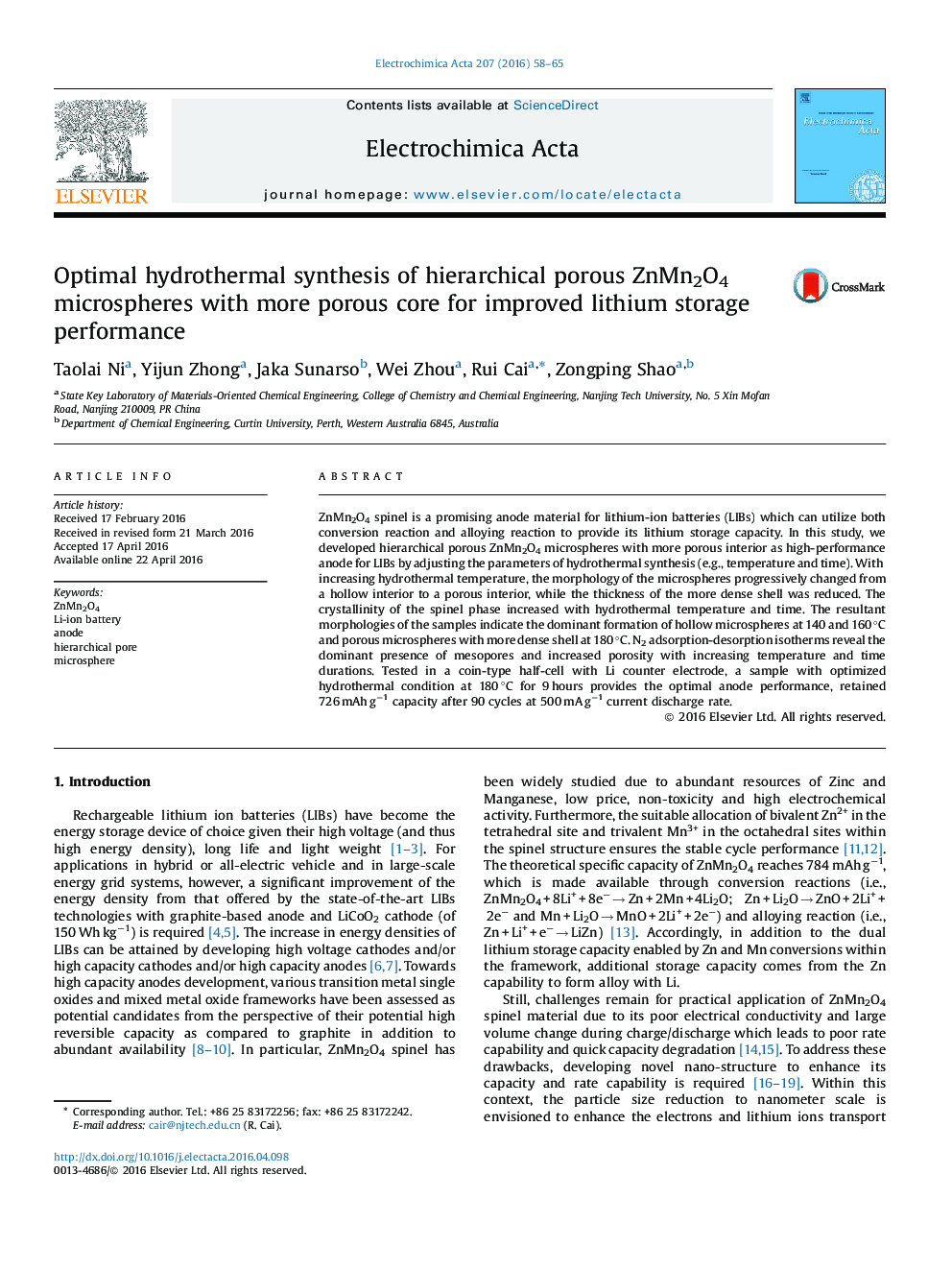| Article ID | Journal | Published Year | Pages | File Type |
|---|---|---|---|---|
| 183016 | Electrochimica Acta | 2016 | 8 Pages |
ZnMn2O4 spinel is a promising anode material for lithium-ion batteries (LIBs) which can utilize both conversion reaction and alloying reaction to provide its lithium storage capacity. In this study, we developed hierarchical porous ZnMn2O4 microspheres with more porous interior as high-performance anode for LIBs by adjusting the parameters of hydrothermal synthesis (e.g., temperature and time). With increasing hydrothermal temperature, the morphology of the microspheres progressively changed from a hollow interior to a porous interior, while the thickness of the more dense shell was reduced. The crystallinity of the spinel phase increased with hydrothermal temperature and time. The resultant morphologies of the samples indicate the dominant formation of hollow microspheres at 140 and 160 °C and porous microspheres with more dense shell at 180 °C. N2 adsorption-desorption isotherms reveal the dominant presence of mesopores and increased porosity with increasing temperature and time durations. Tested in a coin-type half-cell with Li counter electrode, a sample with optimized hydrothermal condition at 180 °C for 9 hours provides the optimal anode performance, retained 726 mAh g−1 capacity after 90 cycles at 500 mA g−1 current discharge rate.
Graphical abstractFigure optionsDownload full-size imageDownload as PowerPoint slide
